Cantalin®
micro
is specially designed for relieving the symptoms of venous circulation disorders, such as swollen legs, varicose veins, restless legs and pain in lower limbs.
The naturally occurring flavonoid compounds diosmin and hesperidin are used to address problems associated with inflammation and swelling in the veins, thus restoring normal vein function.
CANTALIN® micro acts as a phlebotropic and vascular-protective agent. It increases venous tone, improves lymphatic drainage and reduces capillary hyperpermeability.
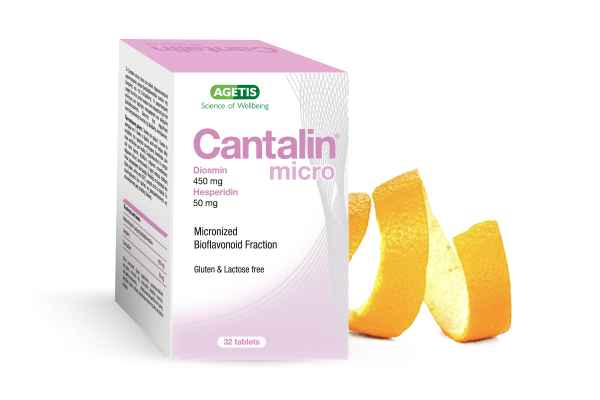
Specially prepared mixture of micronized bioflavonoids
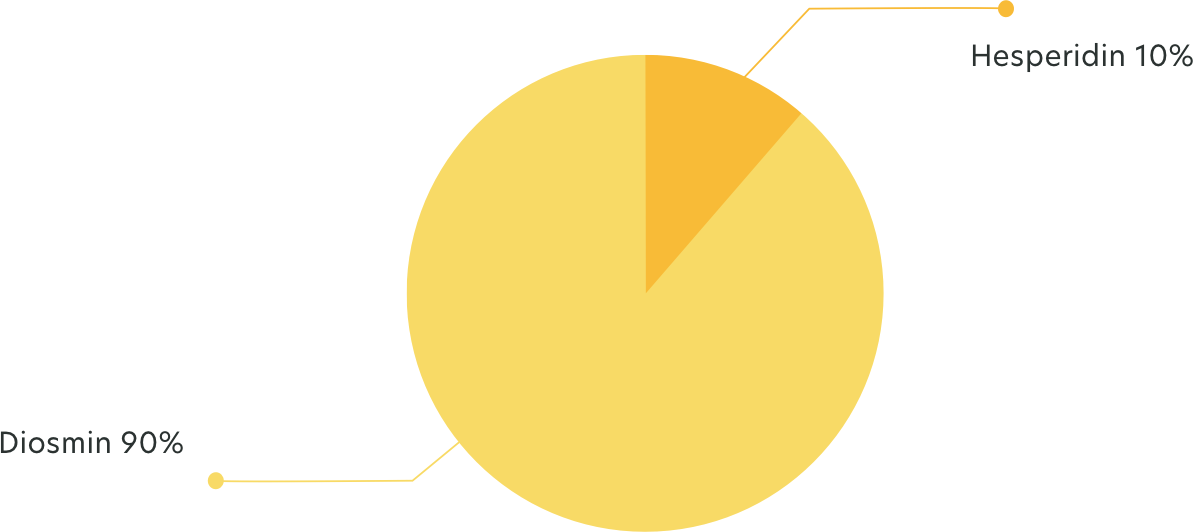
How can I benefit from taking Cantalin® micro?
Taking Cantalin® micro can
• Improve the function of the venous system
• Maintain healthy blood circulation in legs
• Relieve symptoms of venous circulation disorders, such as swollen legs, varicose veins, restless legs and pain in lower limbs
• Help to alleviate varicose veins symptoms, such as fatigue, leg pain and helps to prevent further development of the disease
• Improve symptoms due to haemorrhoids
How do I take Cantalin® micro?
Take 2 tablets daily, one at midday and one in the evening, with a meal or as instructed by your doctor or pharmacist.
Do not exceed the recommended daily dosage.
Each pack contains 32, 64 or 96 tablets.
Which ingredients does Cantalin® micro contain?
Cantalin® micro contains the naturally occurring flavonoid compounds diosmin and hesperidin, found in citrus fruits, such as oranges and lemons.
Micronized Bioflavonoid Fraction
Diosmin (450mg* per tablet)
Hesperidin (50mg* per tablet)
* Daily value not established
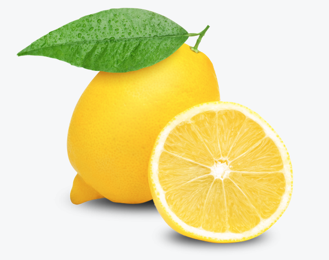
Diosmin
Diosmin is a flavonoid that can mainly be found in the citrus family Rutaceae. Citrus fruits, especially lemons, are rich sources of diosmin. Lemons produce a number of useful flavonoids, including diosmin, in both the mature fruit and the leaves. In 1925, diosmin was first isolated from Scrophularia nodosa L. (figwort). It was introduced as a therapeutic agent in 1969 and has been widely used in Europe as a phlebotonic and vascular protector for the treatment of venous conditions and hemorrhoids.
Hesperidin
Hesperidin is a bioflavonoid found primarily in unripe citrus fruit such as oranges, grapefruit, lemon, and tangerines. Its name derives from the word "hesperidium", meaning fruit produced by citrus trees.
Hesperidin was first isolated in 1828 by French chemist Lebreton from the white inner layer of citrus peels and is thought to have beneficial effects on blood vessels, improve circulation, and reduce inflammation. It is touted as a natural remedy for a number of conditions, including allergies, hemorrhoids, high blood pressure, hot flashes, hay fever, sinusitis, symptoms associated with menopausal changes, premenstrual syndrome, and varicose veins.
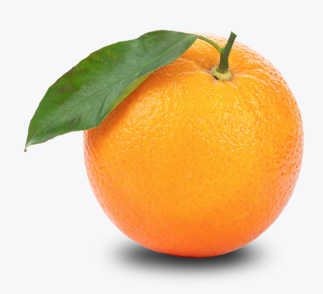
Synergistic action of Diosmin and Hesperidin
The diosmin plus hesperidin combination inhibits inflammatory processes and reduces fluid loss into surrounding tissues. These flavonoids also stimulate lymphatic function and the return of tissue fluid back into the blood circulation, thereby reducing oedema.
Abnormally high blood pressure in the veins causes fluid leakage into the surrounding tissues. The accumulating tissue fluid must be returned to the circulation through the lymphatic system. In chronic venous insufficiency, the lymphatic system becomes overloaded, leading to tissue swelling, or oedema.
A subsequent inflammatory response involving white blood cells causes deterioration of blood vessel integrity and vessel swelling, which further increases fluid leakage from the veins. The combination of diosmin and hesperidin inhibits inflammatory processes and reduces fluid loss into surrounding tissues. These flavonoids also stimulate lymphatic function and the return of tissue fluid back into the blood circulation, thereby reducing oedema.
5 beneficial actions
-
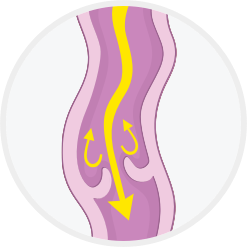
Anti-inflammatory Αction
Reduces venous swelling and/or oedema
-
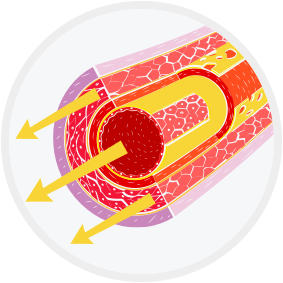
Vasoactive Action
Increases venous tone
-
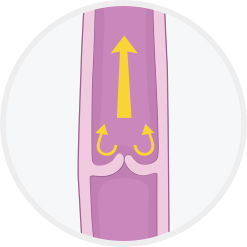
Μicrocirculatory Εffect
Promotes blood flow and improves microcirculation of capillaries
-
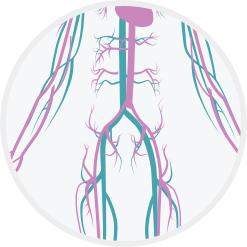
Lymphatic Action
Helps lymphatic fluid return back into circulation
-
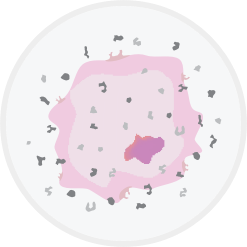
Antioxidant Action
Decreases oxidative stress
1. Katherine A. Lyseng-Williamson and Caroline M. Perry Micronised Purified Flavonoid Fraction. A Review of its Use in Chronic Venous Insufficiency, Venous Ulcers and Haemorrhoids. Drugs 2003; 63 (1): 71-100
2. Diosmin Monograph. Alternative Medicine Review 2004, Volume 9, Number 3
3. Hesperidin. Natural Medicines Database. Professional Monograph. 2/13/2019
4. The British Journal of Surgery: Meta-Analysis of Flavonoids for the Treatment of Haemorrhoids
5. Ramelet AA. Clinical benefits of Daflon 500mg in the most severe stages of chronic venous insufficiency. Angiology 2001;52:S49-S56.
6. Smith PD. Neutrophil activation and mediators of inflammation in chronic venous insufficiency. J Vasc Res 1999;36:24-36.
7. Bergan JJ, Schmid-Schonbein GW, Takase S. Therapeutic approach to chronic venous insufficiency and its complications: place of Daflon 500 mg. Angiology 2001;52:S43-S47.
8. Le Devehat C, Khodabandehlou T, Vimeux M, Kempf C. Evaluation of haemorheological and microcirculatory disturbances in chronic venous insufficiency: activity of Daflon 500mg. Int J Microcirc Clin Exp 1997;17:27-33.
9. Yoichi Nogata et al. Flavonoid Composition of Fruit Tissues of Citrus Species. Bioscience, Biotechnology, and Biochemistry Vol. 70 (2006) , No. 1 pp.178-192
10. Amílcar Duarte et al. Citrus as a Component of the Mediterranean Diet. Journal of Spatial and Organizational Dynamics, Vol. IV, Issue 4, (2016) 289-304
11. Jung-Kook Song and Jong-Myon Bae. Citrus Fruit Intake and Breast Cancer Risk: A Quantitative Systematic Review. J Breast Cancer. 2013 Mar; 16(1): 72–76.
12. Carlos A. González, Núria Sala, Theodore Rokkas. Gastric Cancer: Epidemiologic Aspects. Helicobacter ISSN 1523-5378doi: 10.1111/hel.12082
13. Grapefruit and Medication. Total Health. 27 (2): 39. 2005.
14. Carr, Jackie. Five Ways to Prevent Kidney Stones. UC San Diego. April 22, 2010
15. A. Lichota et al. Therapeutic potential of natural compounds in inflammation and chronic venous insufficiency. European Journal of Medicinal Chemistry 176 (2019) 68-91
16. Bogucka – Kocka et al. Diosmin – Isolation Techniques, Determination in Plant Material and Pharmaceutical Formulations, and Clinical Use. Natural Product Communications Vol. 8 (4) 2013
17. Berne, Robert M, Bruce M. Koeppen, and Bruce A. Stanton. Berne & Levy physiology, Seventh Edition. Philadelphia, PA: Mosby/Elsevier, 2018
18. Hall, John E, and Arthur C. Guyton. Guyton and Hall Textbook of Medical Physiology, 13th edition. Philadelphia, PA: Elsevier, 2016
19. Overview of the Venous System. MSD Manual Consumer Version. Retrieved June 11th, 2016 (https://www.msdmanuals.com/home/heart-and-blood-vessel-disorders/venous-disorders/overview-of-the-venous-system)
20. Huether, Sue E.McCance, Kathryn L., eds. Understanding Pathophysiology. 6th edition. St. Louis, Mo.: Elsevier/Mosby, 2016
21. Heart and Blood Vessels Disorders. MSD Manual Consumer Version. Retrieved June 11th, 2016 (https://www.msdmanuals.com/home/heart-and-blood-vessel-disorders/venous-disorders/overview-of-the-venous-system)
22. Economos C, Clay WD. Nutritional and health benefits of citrus fruits. Food Nutr Agric. 1999;24:11–18
23. Morand C., Dubray C., Milenkovic D., et al. Hesperidin contributes to the vascular protective effects of orange juice: a randomized crossover study in healthy volunteers. American Journal of Clinical Nutrition. 2011;93(1):73–80. doi: 10.3945/ajcn.110.004945
24. Zou Z., Xi W., Hu Y., Nie C., Zhou Z. Antioxidant activity of Citrus fruits. Food Chem. 2016;196:885–896. doi: 10.1016/j.foodchem.2015.09.072
25. Testai L., Calderone V. Nutraceutical value of citrus flavanones and their implications in cardiovascular disease. Nutrients. 2017;9:502. doi: 10.3390/nu9050502
26. Eklöf et al. Revised CEAP classification for chronic venous disorders: Consensus statement. JOURNAL OF VASCULAR SURGERY Volume 40, Number 6, 2004